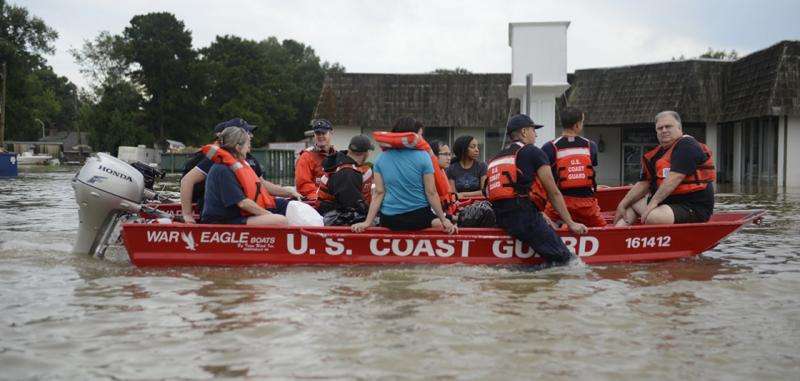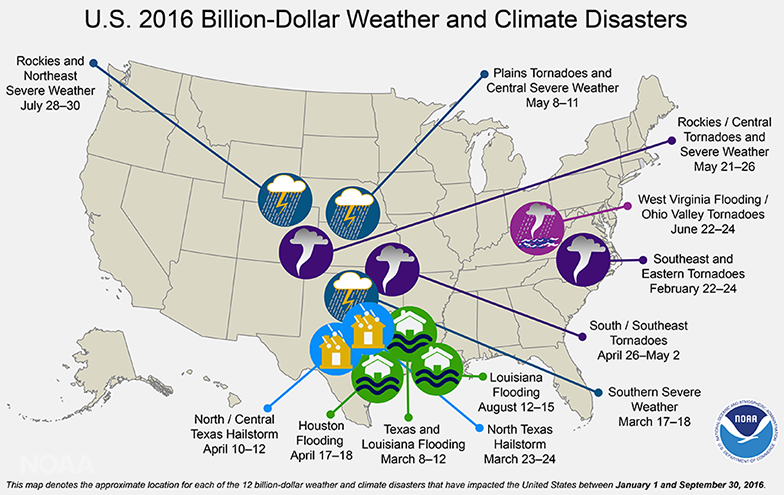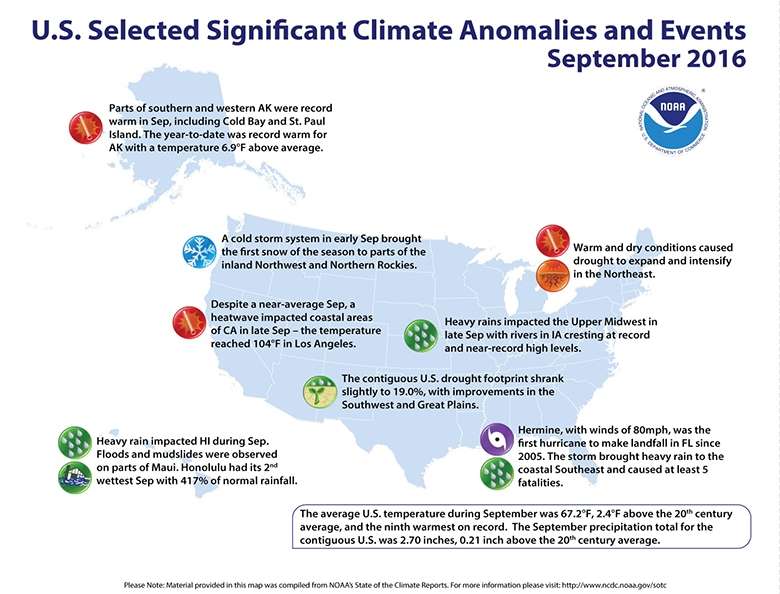Credit: NOAA Headquarters
Bouts of deadly, extreme weather continued to wreak havoc in many parts of the nation this summer.
From May to August, the U.S. experienced four new billion-dollar weather and climate disasters:
- Tornadoes in the Plains and severe weather in the Central U.S. (May 8-11) resulted in two deaths and $1.6 billion in damages;
- Historic flooding in West Virginia and tornadoes in the Ohio Valley (June 22-24) caused 23 deaths and $1 billion in damages;
- Severe weather in the Rockies and the Northeast (July 28-30) caused $1.1 billion in damages but no fatalities; and
- Massive flooding in Louisiana (August 12-15) resulted in 13 deaths and $10 billion in damages.
These four billion-dollar disasters, when added to eight earlier in the year, raised the tally to 12 in 2016 so far, which have claimed a total of 68 lives and caused $26.9 billion in damages. This is the second highest number of disasters; it also doubles the previous record for the number of inland flooding events in one year.
Since 1980, the U.S. has experienced 200 weather and climate disasters, exceeding $1.1 trillion in overall damages, according to scientists from NOAA's National Centers for Environmental Information.
U.S. billion-dollar disasters map for 2016. Credit: NOAA Headquarters
September, by the numbers
In September, the average temperature across the Lower 48 states was 67.2 degrees F (2.4 degrees above the 20th-century average) making it the 9th warmest September in the 122-year record. September averaged 2.70 inches of precipitation, ranking about average.
For year to date (January-September) the contiguous U.S. was the second warmest and the 19th wettest on record. The average temperature was 57.8 degrees F (2.8 degrees above average). All forty-eight states observed much-above-average temperatures during this period. Precipitation was 1.57 inches above average.
Map of some significant U.S. climate anomalies and events for September. Credit: NOAA Headquarters
Other notable climate events in September included:
- Florida: Hermine, with winds of 80 mph, was the first hurricane to make landfall in Florida since Wilma in 2005.
- Iowa: Heavy rains impacted the Upper Midwest with rivers in Iowa cresting at record and near-record high levels.
- Hawaii: Heavy rain impacted the state causing floods and mudslides on some islands. Honolulu had its second wettest September, with 417 percent of normal rainfall.
- Alaska: Parts of southern and western Alaska were record warm, including Cold Bay and St. Paul Island. The year-to-date was record warm for the state with a temperature 6.9 degrees F above average.
More information: The billion-dollar disaster website: www.ncdc.noaa.gov/billions/overview
Provided by NOAA Headquarters


























